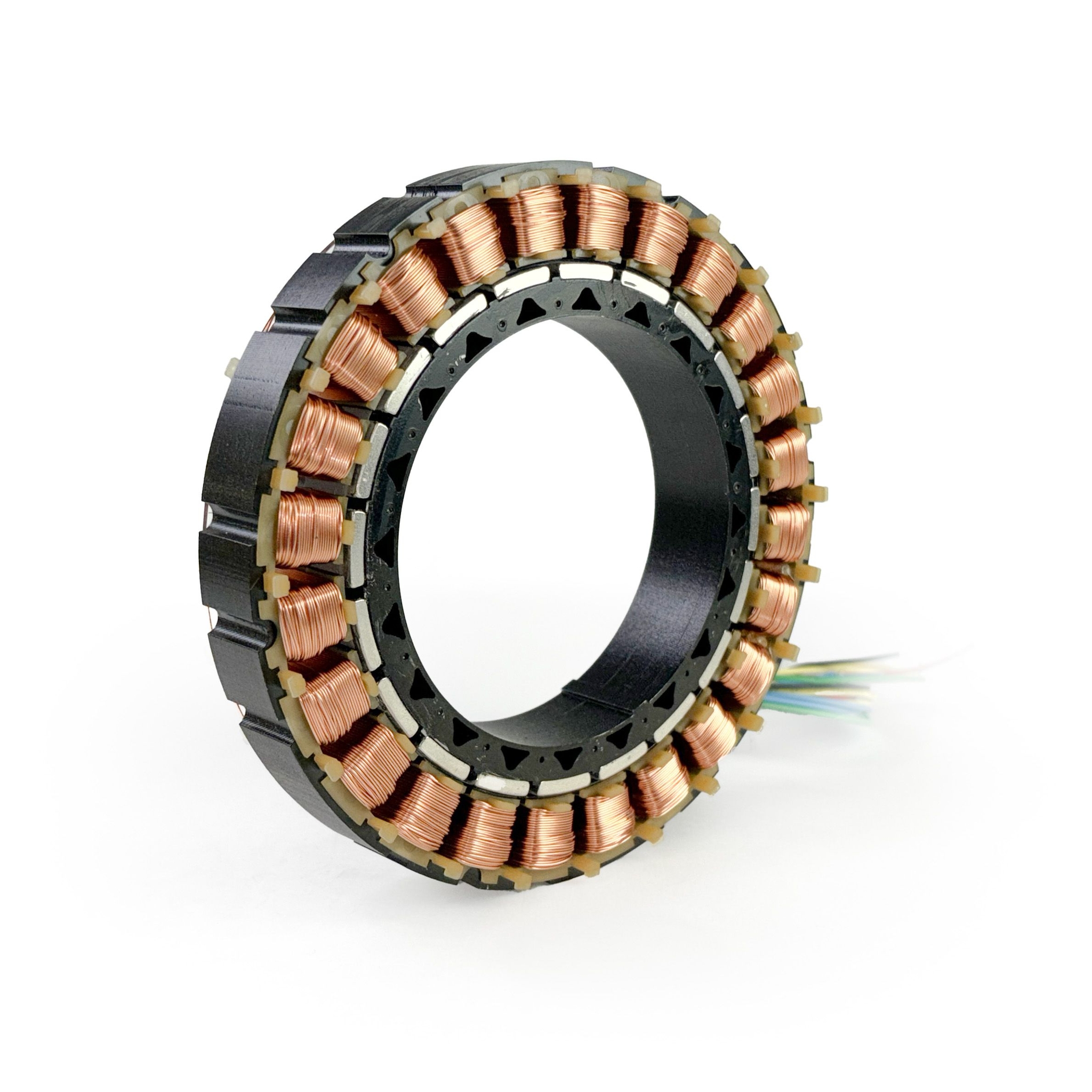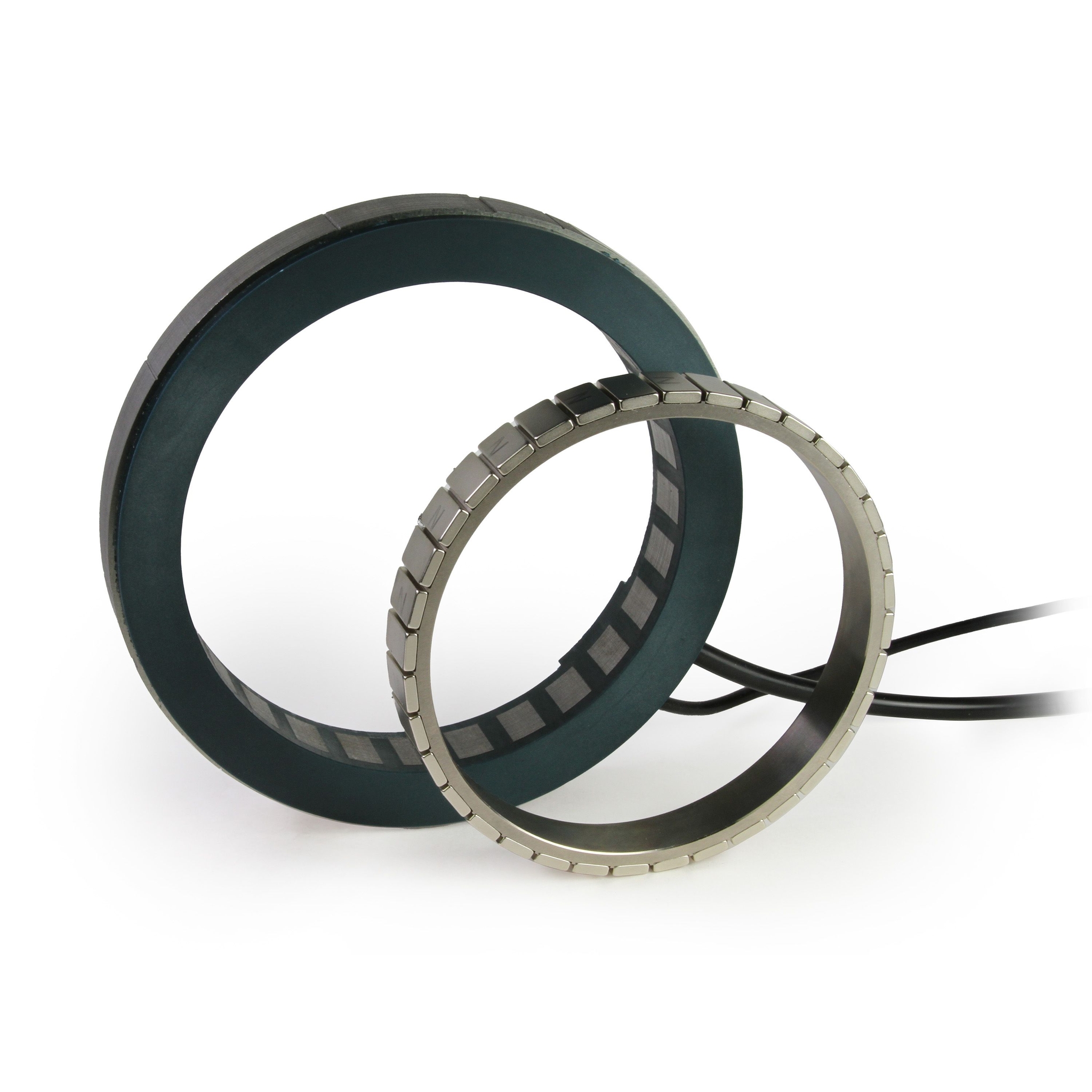what is a frameless torque motor
What is a Frameless Torque Motor?

Frameless torque motors are high-torque, direct-drive motors designed without a housing or shaft, providing exceptional flexibility for custom applications. These motors offer a unique approach to motion control, allowing for integration directly into a system’s mechanical structure. Their frameless design makes them ideal for applications demanding compact, lightweight, and powerful motion solutions, such as in robotics, aerospace, medical devices, and industrial automation.
In this article, we’ll cover the key aspects of frameless torque motors, including their structure, benefits, applications, and how to determine whether they’re the right solution for specific engineering challenges.
The Structure of a Frameless Torque Motor
A frameless torque motor is essentially a motor without the traditional housing or shaft. The design has two main components:
- Rotor: The rotating part of the motor that produces torque.
- Stator: The stationary part containing the winding, which generates an electromagnetic field to drive the rotor.
Unlike traditional motors, frameless torque motors don’t have a casing or mounting frame. “Frameless” means that the motor’s rotor and stator are installed directly into the machine or mechanism they’ll drive. This approach eliminates unnecessary parts and optimizes the motor’s size and weight to the application’s needs.

How Frameless Torque Motors Work
Frameless torque motors operate similarly to conventional electric motors. When an electrical current flows through the stator windings, it generates an electromagnetic field. This field interacts with permanent magnets on the rotor, producing torque and causing the rotor to rotate.
Due to the high-torque, low-speed design, frameless torque motors are particularly well-suited for applications that require precise motion control at slow speeds. Being direct drive also means smoother, quieter operation, as compared to a housed motor coupled to a gear box or a belt drive.
Key Benefits of Frameless Torque Motors
- Compact Design: The frameless architecture enables seamless integration into applications, allowing engineers to optimize space usage by embedding the motor into the machine’s structure.
- High Torque-to-Weight Ratio: Frameless motors can generate high torque relative to their size and weight, making them ideal for portable or weight-sensitive applications.
- Greater Efficiency and Reliability: The direct-drive nature of frameless torque motors eliminates the need for gearboxes, belts, or pulleys, reducing energy loss and maintenance requirements.
- Enhanced Thermal Management: Frameless torque motors are highly adaptable for custom cooling solutions. Without an outer casing, engineers can design custom cooling mechanisms to manage heat better.
- Versatile Customization: Engineers can select or design a frameless motor tailored to their exact application requirements, from custom diameters to specific winding configurations.
Common Applications of Frameless Torque Motors
Frameless torque motors are ideal for applications where high precision, compact design, and high torque are essential. Here are a few industries where these motors are commonly used:
- Robotics: Frameless torque motors provide robots with high torque, smooth motion, and precise control, enabling them to handle intricate tasks.
- Aerospace: Their lightweight and high-power characteristics make frameless motors suitable for drones and other aerospace applications.
- Medical Equipment: In medical devices, frameless motors are used to power robotic surgery systems and other precision instruments where compactness and accuracy are critical.
- Industrial Automation: Frameless torque motors enable precise motion control in automated machinery, especially in processes where high torque and low speeds are required.
- Electric Vehicles (EVs): EV manufacturers integrate frameless torque motors for their high efficiency and torque, essential for delivering powerful, smooth acceleration.
Choosing the Right Frameless Torque Motor for Your Application
When selecting a frameless torque motor, there are several factors to consider:
- Torque and Speed Requirements: Consider the torque and speed of your particular application. Frameless torque motors excel at delivering high torque at low speeds, so understanding these requirements will help you choose the best motor configuration.
- Thermal Management: Assess the operating environment and cooling requirements. Ensure the motor can handle the application’s thermal demands and, if necessary, employ cooling methods such as forced air or liquid cooling.
- Size and Mounting Space: Frameless torque motors are versatile, but size constraints can affect integration. Measure available space and consult motor specifications to determine the best fit.
Why Choose a Frameless Torque Motor?
Frameless torque motors offer unique benefits in terms of performance, size, and integration options. They’re especially valuable for applications where high torque, precision control, and compact design are critical. By eliminating the need for a housing, frameless motors allow engineers to think creatively about space and power requirements, maximizing efficiency while minimizing weight and footprint.
Final Thoughts
Whether you’re developing a robot for precise surgical tasks or building a high-torque, low-speed machine for manufacturing, frameless torque motors provide a versatile, efficient solution. Their high performance, compact design, and customizable nature make them a popular choice across industries, enabling next-generation capabilities in countless applications.
Ready to start on your next product development project utilizing Frameless Torque Motors?
